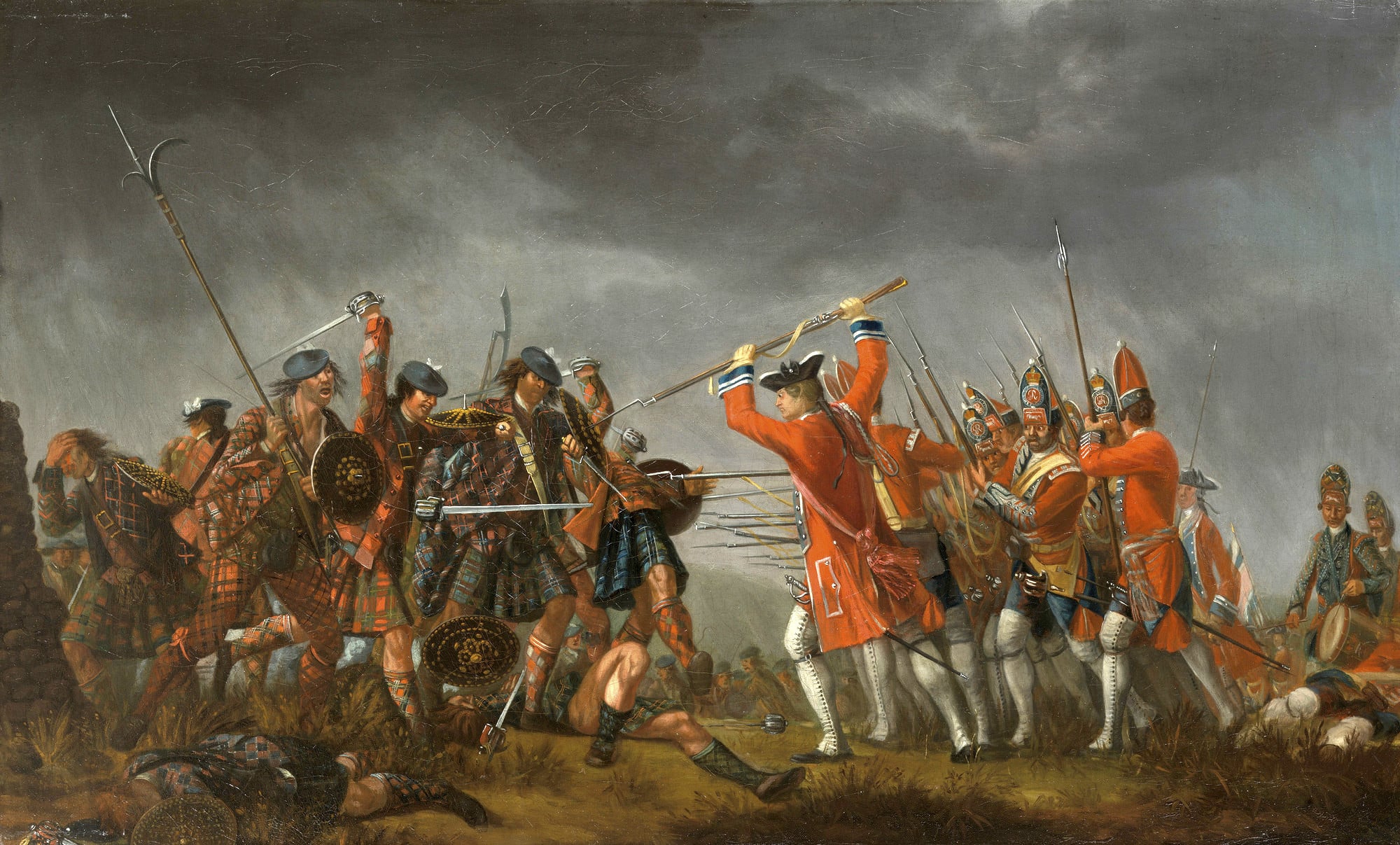Tartan: Symbol of The Clan
Good day, lad or lass! This week I’m back to educate you more on the intriguing history of the tartan. There’s hundreds of years of conflict and love behind those iconic striped creations. Just as clans came together in marriage, they represented great divides as well. Religion against religion, family against family, England against Scotland. I know what you’re probably thinking. What did some little cute fabric design have to do with political conflict? Let’s go back in time and see what all the fuss was about.
The Jacobites
In fiery Scottish fashion, the tartan came into vogue during some….dramatic times. So here’s what happened. There were a group of guys called the “Jacobites”. The Jacobites were a hot tempered batch of men from various clans (families) all in support of a Roman Catholic king, King James. The year is about…1600, by the way. They wanted him restored to the throne of England, Scotland, and Ireland. At the time, Britain was a Protestant kingdom, and before King James came into the picture, the Virgin Queen, Elizabeth I symbolized to her people the Protestant principles upheld by the Church of England. However, under her reign there had always been a threat of Catholicism, as the Church of England called it, and a constant religious war. So when Elizabeth died, the Catholics in Scotland were ecstatic that the heir to it all was a Catholic. They thought that under him, the religion of the land could finally be that of the Roman Catholic Church. So to make their presence and opinion known, they stirred up a grand old uprising.
Battle Gear
A commonplace in the Highlands for centuries, the Jacobites incorporated their family tartans into their everyday dress, as well as their “battle gear”. As the Jacobites waged war, the tartan quickly became associated with these turbulent fighters. From 1689 to 1746, the Jacobite Risings was quite the vendetta. It was sort of similar to the French Revolution, actually, in its sporadically and longevity. But, it all came to a head after the Battle of Culloden in 1746. Basically, the Jacobites lost this round, I mean really lost. No coming back from that one. To ensure that there would be no more uprisings, and to tame those warring Highlanders, the British government banned the kilt and its tartan with the Dress Act of 1746. This made the wearing of the tartan a penal offense, and it was strictly enforced. They repealed the Act by 1785, the tartan became a painful thing of the past.
The Tartan Returns
But all good things get revived, and in 1822, George IV visited Edinburgh! He wanted all those attending official functions to get all decked out in their clan tartans! By this time, a majority of the weavers passed away, and many of the original patterns have been lost. This meant that the tailors of the day had to reinvent some of the original tartans. It was at this time that the tartans expanded beyond just three colors. The newer tartans offered a kaleidoscope of color compared to the tartans of the 16th, 17th, and early 18th centuries. By the 19th century, chemical dyes were increasingly available, and a more economic alternative to natural dyes. These colorful tartans quickly came back into vogue all throughout Scotland, and eventually, the world. To this day, all tartans must be registered in the Registers at Lyon Court in Scotland.
I dinna know about ye, but all this talk makes me want to go design a tartan for my own family!
